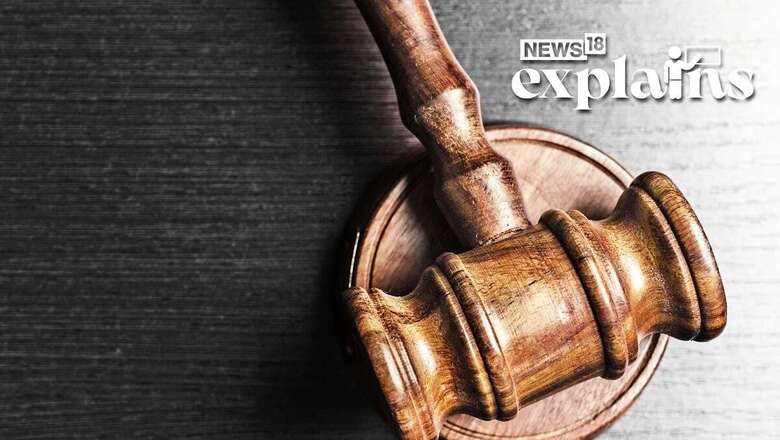
views
The Supreme Court on July 17 dismissed a public interest litigation (PIL) that sought an additional stop for the ‘Vande Bharat’ Train. While refusing to entertain the plea, the bench comprising Chief Justice D Y Chandrachud and Justices P S Narasimha and Manoj Misra said that the decision to provide stoppages for a train fell under the policy domain of the executive hence court would not intervene in this matter.
Earlier, on April 28, a division bench of the Kerala High Court too dismissed the same petition categorically stating that there was “no public interest espoused in the petition.”
The filing of such PILs is nothing new. Many ‘frivolous’ PILs are filed in various courts across the country which on one hand waste the precious time of courts that are grappling with huge pendency, and on the other undermine the credibility of PILs as a mechanism to address important issues.
The Genesis of PILs in India
PILs in India find their genesis in a petition filed by a lawyer named Kapila Hingorani in 1979. She had filed a public interest litigation to seek relief for prisoners who had spent many years behind bars waiting for their verdicts, in in some cases, even waiting for their trials to start.
Kapila Hingorani was permitted to pursue a case in which she had no ‘locus standi’ after considering the fact that her petition involved a matter of ‘public interest.’
Her plea was heard by Justice PN Bhagwati, who along with Justice VR Krishna Iyer, is known as the pioneer of PILs in India.
After the petition of Hingorani, the Supreme Court took up such cases and issued guidelines to ensure speedy trials of those languishing in jails and also released 40,000 undertrial prisoners. Since then, PILs became a widely used mechanism to address issues of social and economic, and political significance. These became a means to seek justice for those who could not do it for themselves.
In the last three decades, the Supreme Court and respective high courts have passed several landmark judgments while hearing PILs that expanded the meaning and scope of the right to life and liberty, equality, and the freedoms guaranteed to the citizens under part three of the Indian constitution that contains fundamental rights. From addressing environmental issues to issues of women’s rights, from ensuring the right to education for children to ensuring the right to live with dignity, PILs have done it all.
Some PILs ‘Frivolous’
However, recent years have seen a spate of cases where PILs have been found to have been filed on the most ‘frivolous’ grounds, sometimes with an aim of gaining publicity, sometimes for private benefit, and sometimes for political reasons.
There have been several instances when the court has rejected the so-called PILs by discerning an oblique motive of serving a private interest.
Commenting on this trend, eminent jurist and former attorney-general of India Soli Sorabjee said in 2016, “Public interest litigation (PIL) is a valuable mechanism to redress the problems of the neglected, alienated and marginalized sections of society. Now, one prerequisite is that it must be instituted ‘bona fide’ and must avoid the three pitfalls associated with PIL: namely ‘private interest litigation’, ‘political interest litigation’ and ‘publicity interest litigation”.
He had added, “In a way the Supreme Court has itself brought upon itself the problem by entertaining PILs very liberally, if I may say, extravagantly. Every matter of public interest cannot be a matter of public interest litigation. For example, rise in the price of onions. So public interest litigation requires a good jockey in the saddle to keep it on the right track and fulfill the objectives for which it was originally designed.”
The apex court had in many cases imposed costs and had admonished the petitioners who were found to have filed the PILs on frivolous ground or with ulterior motives.
And in July 2017, sending a tough message to those resorting to the misuse of PILs, the Supreme Court slapped a cost of Rs 25 lakh on an activist for filing a PIL challenging the shifting of the mini-Vidhan Sabha in Gulbarga district of Karnataka.
The bench of Justice Dipak Misra and A M Khanwilkar, while imposing the cost said that the petition was “an abuse of the concept of public interest litigation as it does not espouse any kind of public cause.”
Similarly, in 2018 Supreme Court imposed a cost of Rs 25,000 on a lawyer named Ashok Pandey who had filed a PIL that sought to reduce the marriageable age for men to 18 years from 21 years. While dismissing the plea and imposing the cost the bench led by Chief Justice of India Ranjan Gogoi said, “Wait till an 18-year-old boy moves SC seeking permission to marry.”
And most recently on July 4, the bench of CJI D Y Chandrachud and Justice P S Narasimha imposed a cost of Rs 50,000 on a petitioner who had filed two PILs. In the first PIL, the petitioner who was an advocate prayed for a direction to be issued to the union government to “formulate a policy for reclassification of the caste system” and in the second PIL, he sought a direction to the states and UTs to “gradually phase out the reservation policy” in public sector employment. Advocate ML Sharma, known as “Serial PIL Filer” had faced the ire of the courts many times, and courts have imposed costs on him on several occasions.
Serious Pendency of Cases
As on June 1, the number of pending matters before the Supreme Court was 68,745 and before the high courts it was 60.9 lakh cases. A total of 4.38 crore cases are pending before lower courts, out of which a considerable number will go to high courts and the Supreme Court as appeals, once they are decided.
In such a scenario, the higher judiciary, which is entrusted with hearing constitutional cases of great importance, cannot afford to waste a single minute on frivolous pleas.
In addition, the system of PILs is a response to the needs of society and has helped in massive social transformation. And, its misuse only dents its credibility which is not good for our justice system.




















Comments
0 comment